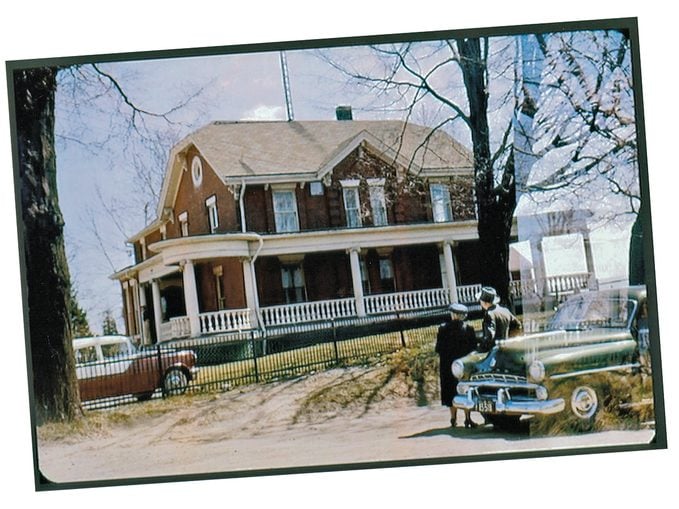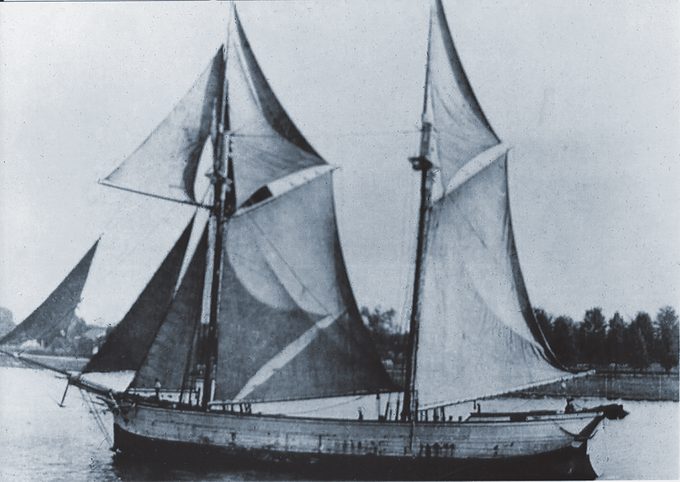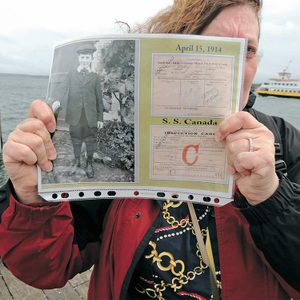The Greatest Great-Great-Grandfather of All
From shipwrecks to family tragedies, William Bunton's journey through the 19th century is recalled by his descendent.
Born in 1819 in Westmoreland County, England, to Irish parents, Henry and Mary, my great-great-grandfather, William Bunton, immigrated to Upper Canada in 1832. They settled in Wellington Square, now Burlington, Ontario, where Henry became an innkeeper in Nelson County.
In 1844, William married Elizabeth Bates Reynolds with whom he had eight children. The oldest was a daughter, Sarah, my great grandmother. In the 1851 Province of Ontario directory, William is listed as a general merchant and provision dealer. His general store, later owned by John Waldie, was at the northeast corner of the present Lakeshore Road and John Street. He was well-known in Wellington Square in many capacities. He subdivided and sold lots in Bunton’s survey, which stretched from Lakeshore Road north to Ontario Street, and from Locust Street to St. Luke’s Church Avenue. He was also a prominent grain and lumber merchant.

In those days, roads were little more than trails through the bush, so in order to move merchandise to Great Lakes ports, William ordered the construction of two two-masted sailing ships, the Azov in 1866, and the Sweepstakes in 1867, in partnership with John Waldie. They were built by master shipbuilder, John Simpson.
Across the road from the general store was the Bunton family’s lovely brick home, called The Four Oaks, since there were four large oak trees in line along the stone fences. Beside his home was William’s office from which he carried on his business. Since the back of the property bordered on Lake Ontario, he also built a wharf to which he tied his two sailing vessels. Even a century later, the remnants of that wharf were still in evidence.
Although I am unable to confirm it, there is a very great possibility that The Four Oaks later became Oak Bank Inn, a successful business that offered rooms, as well as a varied menu in the dining room. Because of its location on old Highway 2, the motoring public were able to buy gas and oil as well.

For 18 years, William’s two ships hauled cargo, such as lumber, grain, rail ties and coal, to and from Great Lakes ports. Around 1880, he relinquished ownership of the vessels. In 1911, the Azov sprang a leak. The crew managed to abandon ship, but she capsized, and later came ashore near McGregor Point, where the elements broke her to pieces where she lay. An interesting piece of memorabilia is the 15-foot helix sculpture made from the giant anchor chain of the Azov, which now resides in the Bruce County Museum in Southampton, Ontario.
On the other hand, the Sweepstakes hit a rock near Cove Island in 1885, and sank into shallow water near the light station. She remained there until she was towed into Big Tub Harbour, where she was found to be beyond repair, and the nearly intact hull sank into six metres of water. Although deteriorating a little more each year, the Sweepstakes is one of the best preserved Great Lakes’ schooners to be found.
William’s first wife died at age 40. He later remarried Clarissa Jane Bastedo, and they had four more children before she died of diphtheria. He and his third and final wife, Alexandrina Cameron, had no children together. On a sad note, in 1871, William’s 17-year-old son, Walter, drowned near Buffalo. Walter had been a member of the ship’s crew on the barque, Maria Martins. On the day of the funeral, all the businesses of Wellington Square were closed out of respect for this popular citizen’s sad loss.
In 1879, William left his hometown to go to Oil City/Bradford, Pennsylvania, to speculate and invest in oil. While touring some of his wells in 1881, there was an explosion that killed four men instantly, including William. And so my great-great-grandfather’s body was brought back to Wellington Square and buried in the family plot in the cemetery at St. Luke’s Parish Church.
Burlington has grown and changed over the intervening years. The Four Oaks and the story of William Bunton is just a part of our family history now. His oldest daughter, Sarah, married and gave birth to my grandmother, Louise Husband Johnston.
Possibly the only tribute to one of the region’s most prominent citizens of the past in existence today is an aptly named condominium, Bunton’s Wharf.
Next, check out the haunting stories behind Canada’s most famous shipwrecks.






